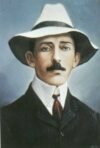Structures
TOPIC: ORGANIZATIONAL STRUCTURES AND PEOPLE
LEVEL: EASY
Read the introductory text about the organizational structure of Southwest Airlines. Compare it to the conventional organizational chart some bigger airlines have implemented (below) and a general approach to structure (see text below):
Southwest Airlines, one of the most successful airlines in the low-budget segment, a business role model and a true inspiration to many, was founded in the late 60s. Since then it has gone through transformations and troublesome times, but managed to keep the business up and running against all odds.
Although some attribute its success to the business model and strategy developed by co-founders Herb Kelleher and Rollin King (see “Southwest Effect”), industry experts see Southwest’s strength in structure, processes and people. (www.mckinseyquarterly.com/A_new_organizational_model_for_airlines_1700 )
Major airlines will usually develop complex structures that include multiple layers of management. Southwest prefers to keep things simple explaining that bureaucracy “kills the entrepreneurial spirit”. Its structure is functional, however, “the overhead” is kept as small as possible, with only a few layers of management and a tendency to decentralize responsibilities with reliance upon quality, communication and feedback (i.e. employees are entrusted with a number of activities, while other airlines would normally require more rigid job specialization).
Southwest takes great pride in its “University for People” where staff is trained and later – recruited – based on a number of qualities. Priority is given to a good attitude and friendliness, while work process at Southwest is built on the open-door concept, when employees are motivated to be pro-active and try out new things.
1. Read the article about conventional airline organization and answer the following questions:
http://www.avjobs.com/history/structure-of-the-airline-industry.asp
1. What are the main categories singled out in the airline organizational structure? (Answer: line personnel, operations, maintenance, sales and marketing, reservations and ticketing, staff personnel and subcontractors)
2. What are the divisions that account for 85% of the airline employees? (Answer: engineering and maintenance, flight operations and marketing)
3. What is the Operations division responsible for? (Answer: It is in charge of all flight-crew training, both initial and recurrent training for pilots and flight attendants, and it establishes the procedures crews are to follow before, during and after each flight to ensure safety)
4. What do maintenance programs do? (Answer: Maintenance programs keep aircraft in safe, working order; ensure passenger comfort; preserve the airline’s valuable physical assets (its aircraft); and ensure maximum utilization of those assets, by keeping planes in excellent condition)
5. How do electronic ticketing systems help airlines? (Answer: Electronic ticketing allows an airline to document the sale and track the usage of transportation.)
6. What do you call people who contract with airlines to do certain work for them? (Answer: subcontractors)
7. Who holds responsibility for keeping up with federal safety regulations? (Answer: the airline)
8. What areas does “Sales and Marketing” encompass? (Answer: This division encompasses such activities as pricing, scheduling, advertising, ticket and cargo sales, reservations and customer service, including food service)
9. Where are staff personnel usually based and what categories are they divided into? (Answer: corporate headquarters; finance & property, information services, personnel, medical, legal, public relations and planning)
10. Which of the divisions performs fleet planning? (Answer: staff personnel)
How Major Airlines are Structured
Line Personnel
These include everyone directly involved in producing or selling an airline’s services – the mechanics, who maintain the planes; the pilots, who fly them; the flight attendants, who serve passengers and perform various in-flight safety functions; the reservation clerks, airport check-in and gate personnel, who book and process the passengers; ramp-service agents, security guards, etc. Line personnel generally fall into three broad categories: engineering and maintenance, flight operations, and sales and marketing. These three divisions form the heart of an airline and generally account for 85 percent of an airline’s employees.
Operations
This department is responsible for operating an airline’s fleet of aircraft safely and efficiently. It schedules the aircraft and flight crews and it develops and administers all policies and procedures necessary to maintain safety and meet all FAA operating requirements. It is in charge of all flight-crew training, both initial and recurrent training for pilots and flight attendants, and it establishes the procedures crews are to follow before, during and after each flight to ensure safety. Dispatchers also are part of flight operations. Their job is to release flights for takeoff, following a review of all factors affecting a flight. These include the weather, routes the flight may follow, fuel requirements and both the amount and distribution of weight onboard the aircraft. Weight must be distributed evenly aboard an aircraft for it to fly safely.
Maintenance
Maintenance accounts for approximately 11 percent of an airline’s employees and 10-15 percent of its operating expenses. Maintenance programs keep aircraft in safe, working order; ensure passenger comfort; preserve the airline’s valuable physical assets (its aircraft); and ensure maximum utilization of those assets, by keeping planes in excellent condition. An airplane costs its owner money every minute of every day, but makes money only when it is flying with freight and/or passengers aboard. Therefore, it is vital to an airline’s financial success that aircraft are properly maintained. Airlines typically have one facility for major maintenance work and aircraft modifications, called the maintenance base; larger airlines sometimes have more than one maintenance base. Smaller maintenance facilities are maintained at an airline’s hubs or primary airports, where aircraft are likely to be parked overnight. Called major maintenance stations, these facilities perform routine maintenance and stock a large supply of spare parts. A third level of inspection and repair capability is maintained at airports, where a carrier has extensive operations, although less than at its hubs. These maintenance facilities generally are called maintenance stations.
Sales and Marketing
This division encompasses such activities as pricing, scheduling, advertising, ticket and cargo sales, reservations and customer service, including food service. While all of them are important, pricing and scheduling in particular can make or break an airline, and both have become more complicated since deregulation. As explained in the next chapter, airline prices change frequently in response to supply and demand and to changes in the prices of competitors’ fares. Schedules change less often, but far more often than when the government regulated the industry. Airlines use sophisticated computer reservation systems to advertise their own fares and schedules to travel agents and to keep track of the fares and schedules of competitors. Travel agents, who sell approximately 80 percent of all airline tickets, use the same systems to book reservations and print tickets for travelers.
Reservations and Ticketing
There are major changes in air transportation, which simplify the process for airline passengers to make a reservation and to purchase a ticket. Electronic commerce is playing a significant part in the airline industry. In addition to the paper tickets issued in the past, all of the major airlines are now offering electronic ticketing for domestic and international air travel. Electronic ticketing allows an airline to document the sale and track the usage of transportation. Passengers no longer worry about carrying flight coupons or losing their tickets. Passengers have the ability to shop for the lowest priced transportation, make or change a reservation, request refunds etc., not only from their travel agent but from their own personal home computer or from a telephone, on the way to the airport. A boarding pass is issued at the airport in exchange for proof of a reservation (an airline confirmation number) and payment (cash or a major credit card). The number of air travelers shopping, making reservations and purchasing electronic tickets using the Internet is increasing daily. Self-service automated ticketing machines are also widely available at major airports around the country.
The next step for airlines will be to automate the check-in procedure. Electronic self-service check-in computer kiosks at major airports will soon be available for most passengers using electronic tickets. Self-service machines will enable passengers to verify their itinerary, obtain class of service upgrades, select specific seat assignments, check baggage with bar-coded baggage tags and obtain their own boarding passes.
Staff Personnel
These include specialists in such fields as law, accounting, finance, employee relations and public relations. Their function is to support the work of the line personnel, so that the airline runs efficiently and earns a profit. For the most part, staff personnel work out of corporate headquarters and fall into seven broad job categories typical of major corporations: finance & property, information services, personnel, medical, legal, public relations and planning. Finance & property handles company revenues and finances. In addition, it oversees all company property and the purchase of food, fuel, aircraft parts and other supplies needed to run an airline. Information services designs and maintains the company's internal computer systems, used to store and analyze data needed for operations and planning. At an airline, this includes the important function of fleet planning.
Subcontractors
While major airlines typically do most of their own work, it is common for them to farm out certain tasks to other companies. These tasks could include aircraft cleaning, fueling, airport security, food service and in some instances, maintenance work. Airlines might contract out for all of this work or just a portion of it, keeping the jobs in house at their hubs and other key stations. However, whether an airline does the work itself or relies on outside vendors, the carrier remains responsible for meeting all applicable federal safety standards.
2. Fill in the blanks where divisions, departments or responsibilities are missing:
1) ………………………. work out of corporate headquarters and fall into seven broad job categories typical of major corporations: finance & property, information services, personnel, medical, ……….., public relations and planning (Answer: staff personnel, legal)
2) While all of them are important, ………………………………….and ………………. in particular can make or break an airline, and both have become more complicated since deregulation. (Answer: pricing and scheduling)
3) Called major …………………………….., these facilities perform routine maintenance and stock a large supply of spare parts (Answer: maintenance stations)
4) …………………………… is in charge of all flight-crew training, both initial and recurrent training for pilots and…………………………., and it establishes the procedures crews are to follow before, during and after each flight to ensure safety (Answer: Operations, flight attendants)
5) ……………………………… include everyone directly involved in producing or selling an airline’s services – the mechanics, who maintain the planes; the pilots, who fly them; the flight attendants, who serve passengers and perform various ……………………..functions; the reservation clerks, airport check-in and gate personnel, who book and process the passengers; ramp-service agents, security guards, etc (Answer: Line personnel, in-flight safety)
3. Watch Southwest’s co-founder Herb Kelleher give a speech about personnel called “Business of Business is people”. http://www.youtube.com/watch?v=oxTFA1kh1m8
Follow the partial transcript below and fill in the blanks with the missing words from the ones available in the columns:
· shareholders
· psychic satisfaction
· employee services
· synergy
· reward
· intangibles
· standpoint
· corporate speak
· employee care departments
· spiritual infusion
The business of business is people: yesterday, today and forever. And as among employees, 1.……………………………….and customers, we decided that our internal customers – our employees – came first. The 2.…………………………..in our opinion is simple: honor, respect, care for, protect and 3……………………..your employees regardless of title and position, and in turn they will treat each other and their external customers in a warm, caring and hospitable way. This causes external customers to return, thus bringing joy to shareholders.
We believe that our job is not only to provide a far more reliable service at far lower fares, but also to provide a 4…………………………- an infusion of fun, warmth, hospitality and diligent servehood for both, employees and our passengers. The 5…………………………….. of spirit in our view are more important than the tangibles of things.
Why? First of all it’s a matter of morality and ethics. But secondly, from a purely business …6……………………………, the tangibles can always be purchased: all airlines have airplanes. But the intangibles are far more difficult for competitors to replicate. And unless the airline is paying pienege compensation, 7………………………………………….. is what employees and even external customers are primarily seeking.
Communicate, communicate, communicate and communicate, but not in 8…………………………………. or bureacratise, which is not only boring, but hardly understandable. Set up 9……………………………….and 10…………………………………………………….which are constantly in contact with employees who have any professional or personal problems. Show that you value your employees as individuals…
Answers: 1) shareholders, 2) synergy, 3) reward, 4) spiritual infusion, 5) intangibles, 6) standpoint, 7) psychic satisfaction, 8)corporatespeak, 9) employee services and employee care departments
4. Answer the following questions based on the video you have watched:
1) In this context, when Kelleher says “the synergy is simple”, he means: a) the secret, b) the combination, c) the answer (Answer: 1b)
2) According to Kelleher, who is given priority at Southwest? a) customers, b) employees, c)shareholders (Answer: 2b)
3) What does he mean by spiritual infusion in this context? (Answer: bringing warmth, respect and hospitality)
4) What does he consider to be the most important thing customers and employees are driven to? (Answer: psychic satisfaction)
5) What does Kelleher advise other business owners to arrange for employees in order to make them feel that they count as individuals? (Answer: build employee services and employee care departments)
5. Match these words with their definitions:
1) corporatespeak
2) intangibles
3) standpoint
4) synergy
5) infusion
a. the interaction of two or more components
b. things incapable of being perceived by the senses
c. the process of introducing something
d. opinion
e. patterns or buzzwords of corporate language
Answers: 1e, 2b, 3d, 4a, 5c
















